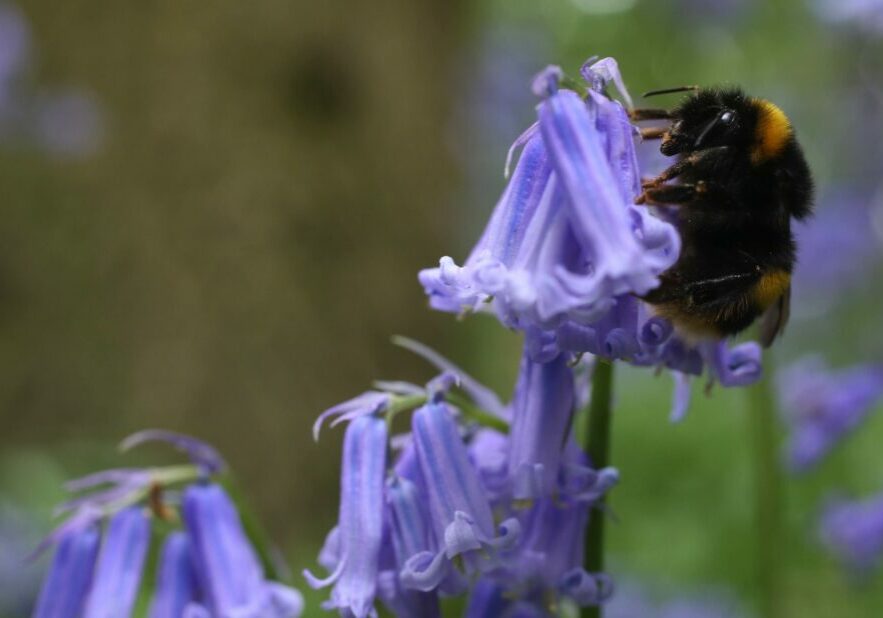Two years of lockdowns and restrictions have seen a surge of interest in edible gardening. And rightly so. It saves money, protects the planet and is incredibly satisfying. As an added bonus, you can grow veggies no matter what size garden you have – from a few pots on a patio to an allotment.
But if you’ve not done it before, the prospect can be daunting. Which veg should you grow? How do you prepare the soil, weed and feed? And what should you do about bugs and slugs?
Traditionally, wildlife has been viewed as the enemy of the fruit and vegetable grower, with some species even labelled as pests. But it’s possible – and even beneficial – to welcome wildlife into your veg patch. Creating wild habitats will not only help threatened species, it also helps you.
Leaving areas of long grass, wild flowers and a few nettles around the edge or nearby will provide shelter and food for beneficial insects such as ladybirds, hoverflies and wasps. Common wasps are gardeners’ friends and eat a wide range of veggie-chomping invertebrates, including caterpillars, aphids and ants.
Creating a pond to attract frogs and toads, or a log pile for hedgehogs, will encourage them to eat the slugs and other grubs that might plague your young plants. Fruit- or berry-bearing trees and shrubs provide food and shelter for blue tits and house sparrows, which will pay you back by pecking the caterpillars, aphids and other insects off your greens. And providing a large stone as an anvil may encourage song thrushes to bash the snails that chew holes in your leaves.
Creating a wildlife-friendly veg plot means more habitat for wildlife, less work for you and a constant supply of healthy, natural produce on your plate without the air miles. It’s a great way to reconnect with food and conserve our world’s precious natural resources.
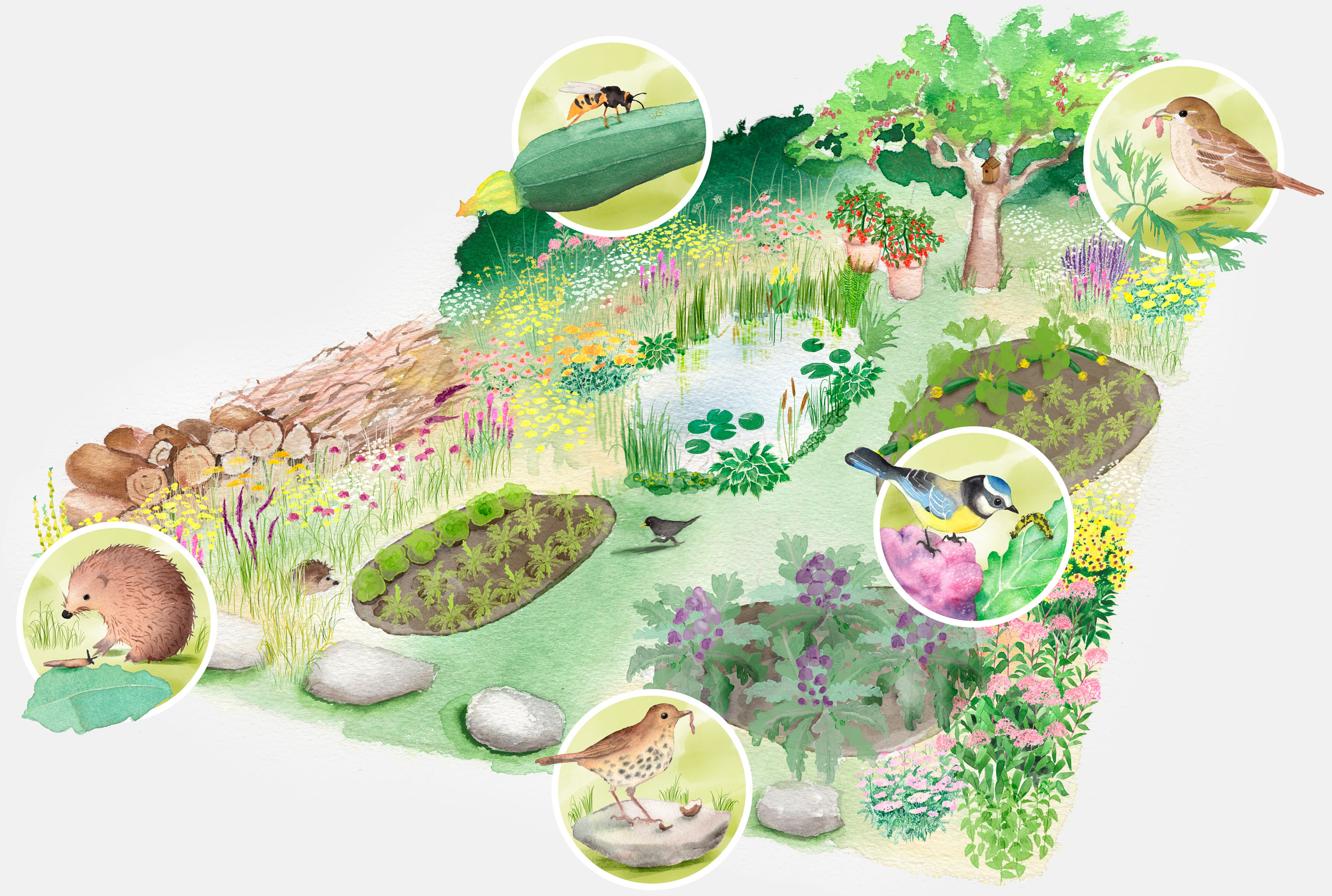
ILLUSTRATION: SCOTT JESSOP
What to grow
Here are five easy-to-grow vegetables to get you started.
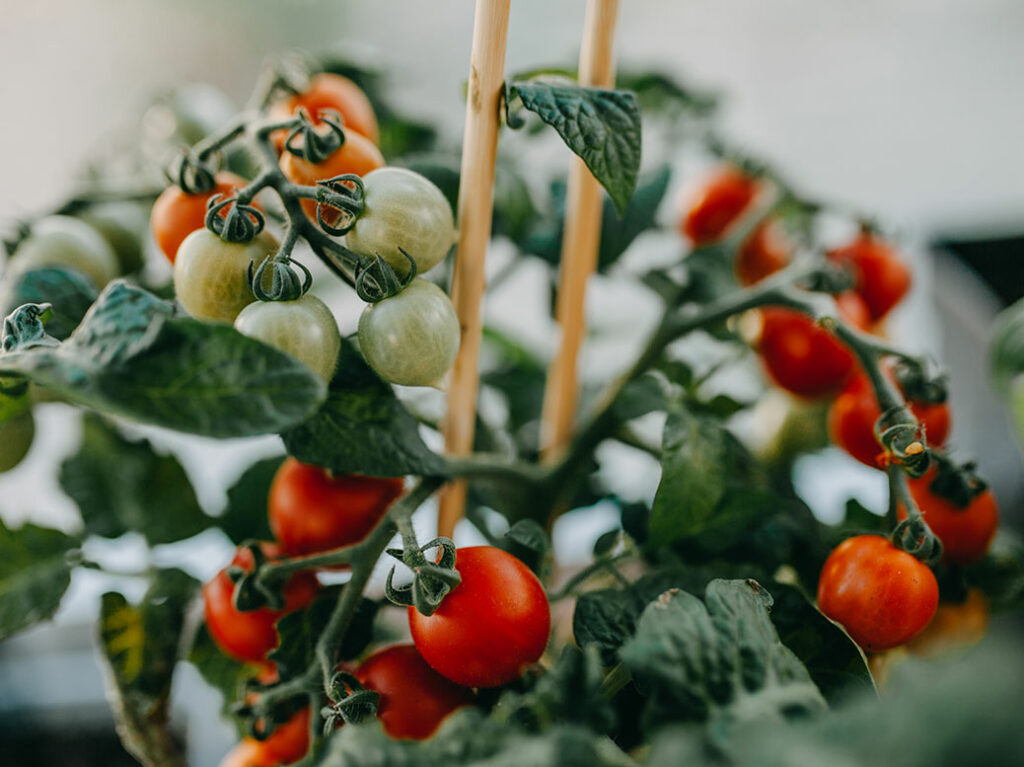
Tomatoes
Bush tomatoes, such as the variety ‘Gartenperle’, are much easier to grow than other tomatoes, and best suited for growing in pots and hanging baskets. Simply water and feed regularly.
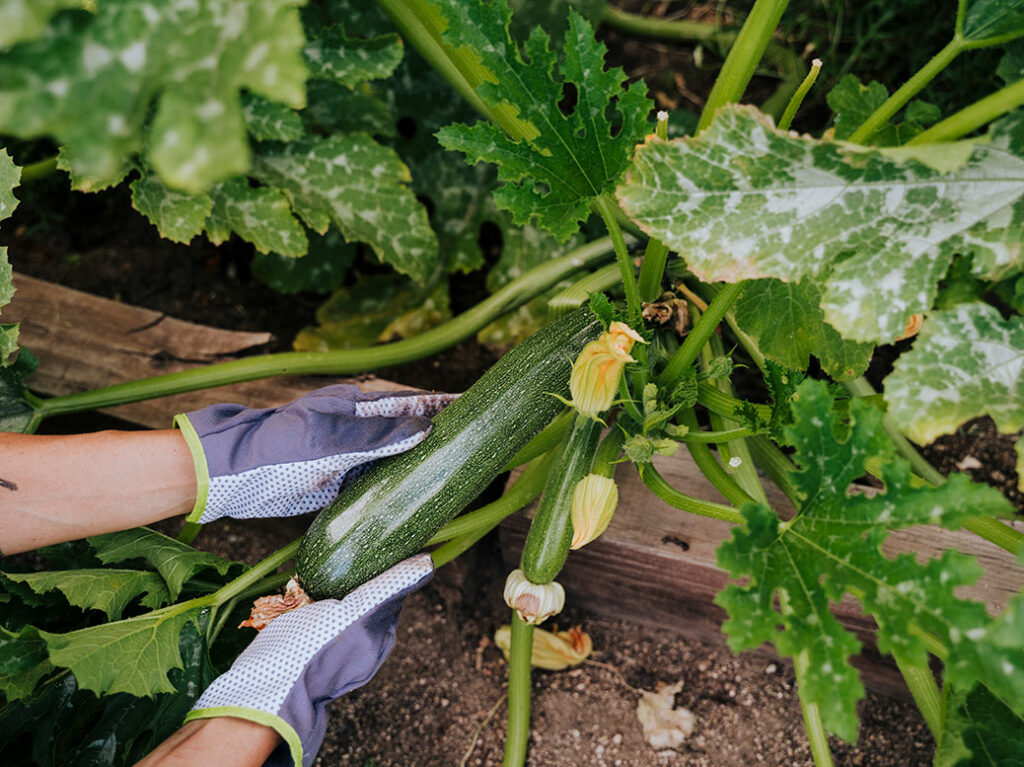
Courgettes
One of the easiest and most prolific crops to grow. Plant in moist, rich soil and water regularly. Can also be grown in pots.
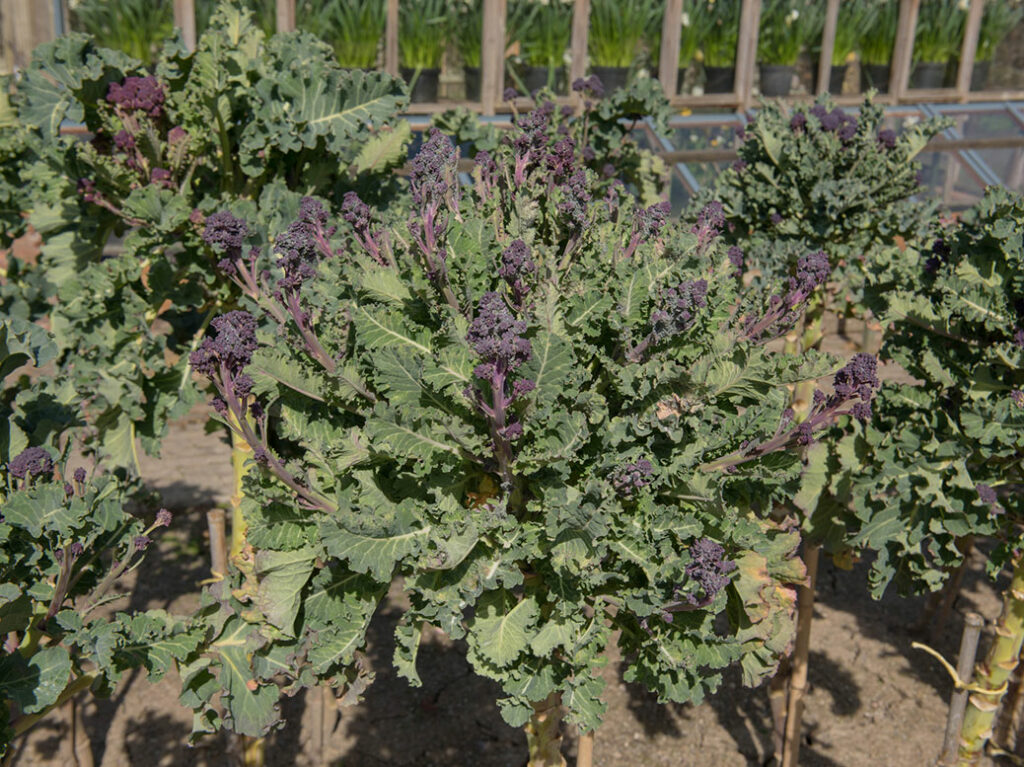
Purple sprouting broccoli
This takes a long time to grow but it’s worth it. Sow in spring and harvest in winter. Many gardeners use nets to protect them from caterpillars, but you don’t need to.
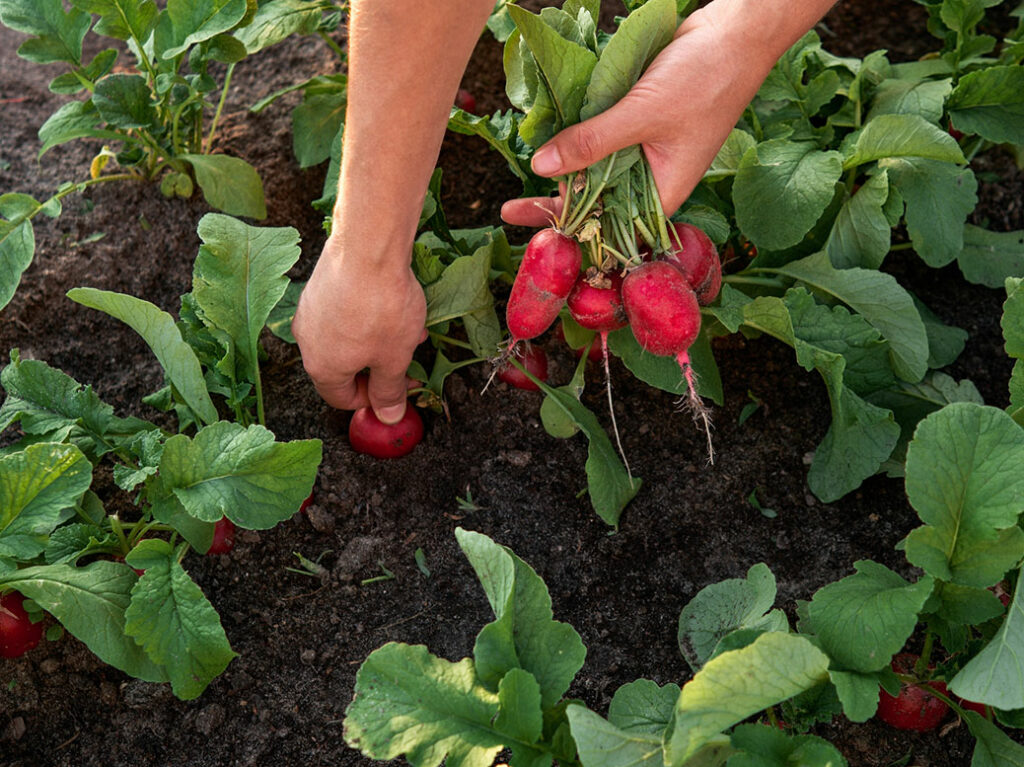
Radishes
You can sow radish seeds as early as February and harvest the roots just six weeks later. Don’t allow the roots to become woody before harvesting.
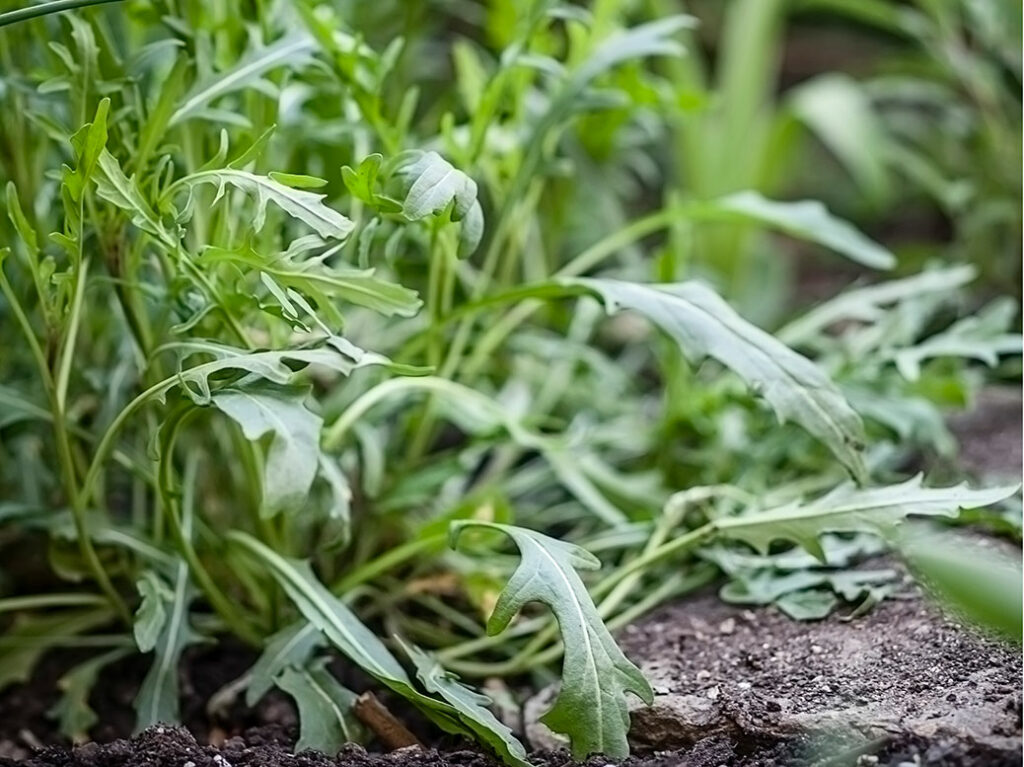
Salad leaves
Varieties such as rocket and mizuna can be sown in the ground or in pots. Keep well watered and harvest the leaves as they appear.
ALL ABOVE IMAGES: © GETTY IMAGES
What to spot
Keep an eye out for these birds, insects and mammals around your veg patch
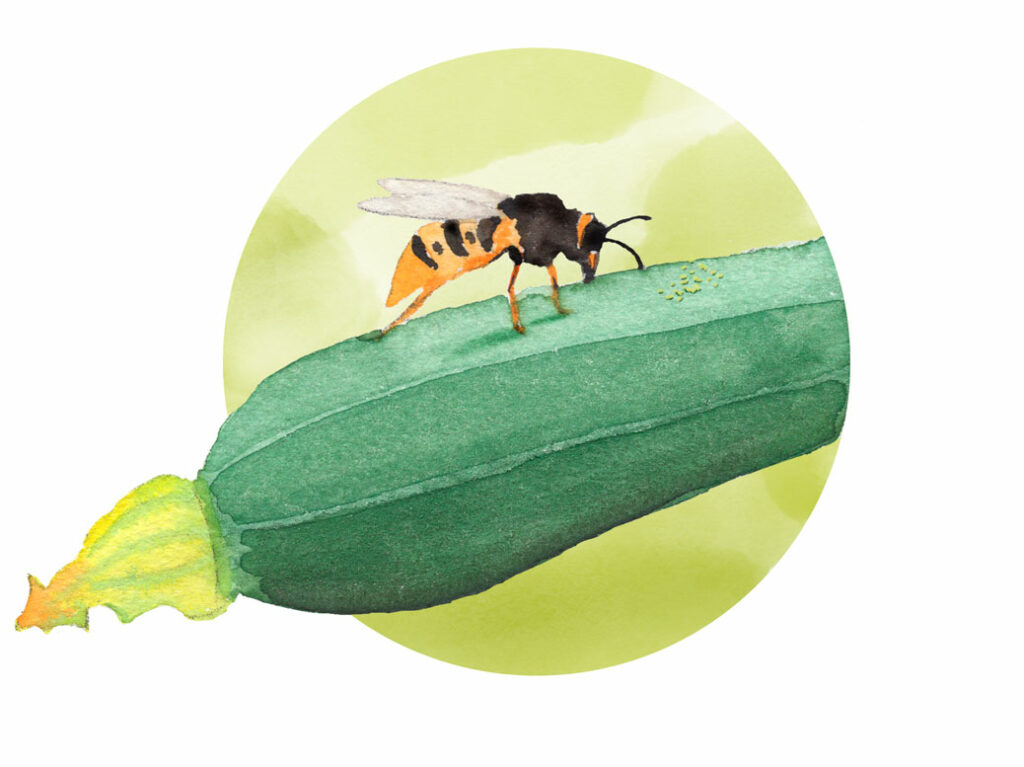
Common wasp
One of the best insect predators you can encourage to your garden. Wasps eat caterpillars, aphids and small flies. Keep your distance and they won’t harm you.

House sparrow
Adult birds eat seeds, but they feed caterpillars and aphids to their young. They take ‘pests’ from virtually any plant they can find them on, including beans, courgettes and brassicas (cabbages, broccoli and Brussels sprouts).
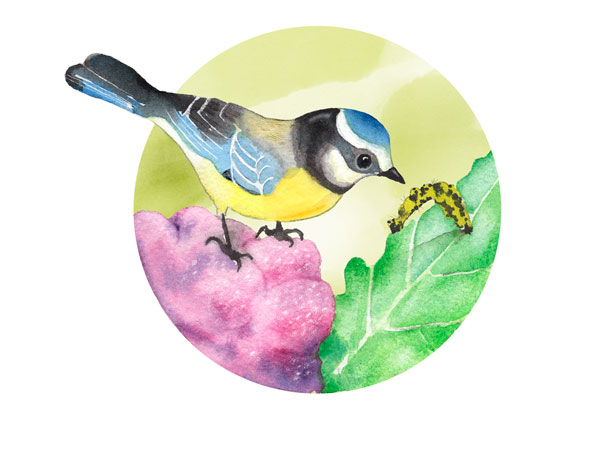
Blue tit
It’s thought that one baby blue tit can eat 100 caterpillars per day, so you really don’t need to put nets over your brassicas as the birds will keep an eye on your plants.
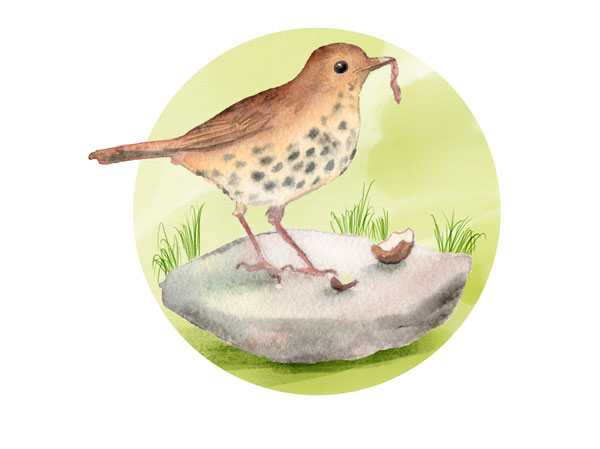
Song thrush
The greatest predators of snails. Make sure you provide a large flat stone for them to use as an anvil – they can smash snail shells on it.
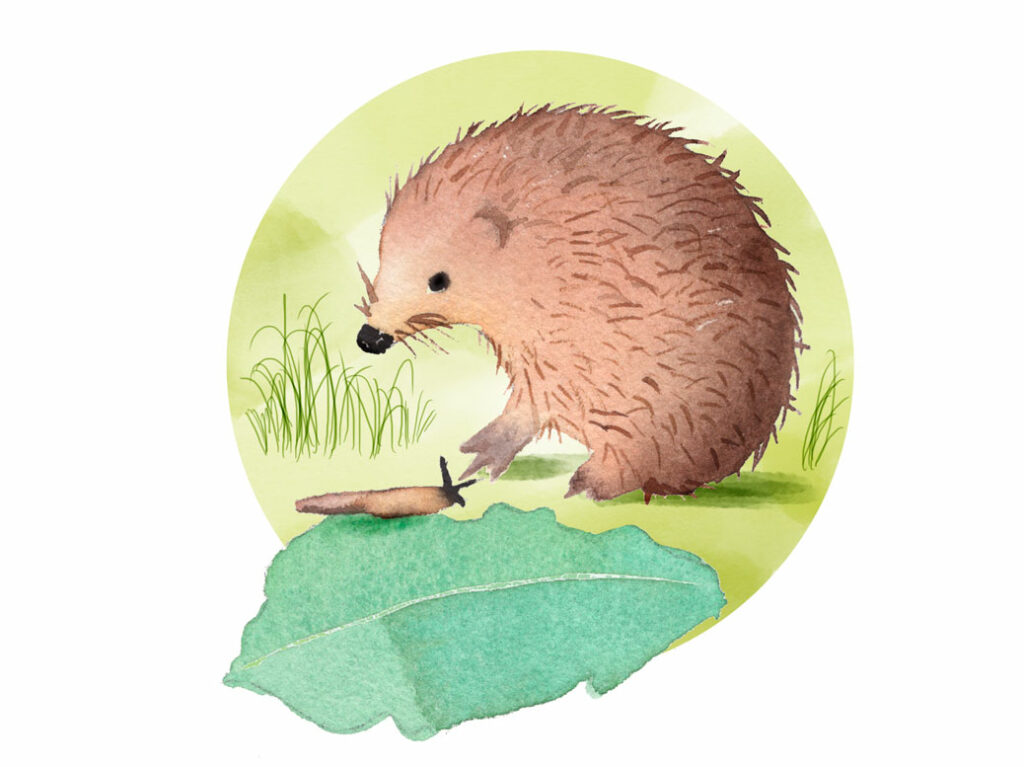
Hedgehog
Hedgehogs shelter in long grass, log piles, beneath sheds and among fallen leaves. They eat beetles, worms and slugs, plus insect ‘pests’ such as caterpillars.
All ABOVE ILLUSTRATIONS: SCOTT JESSOP
More to explore
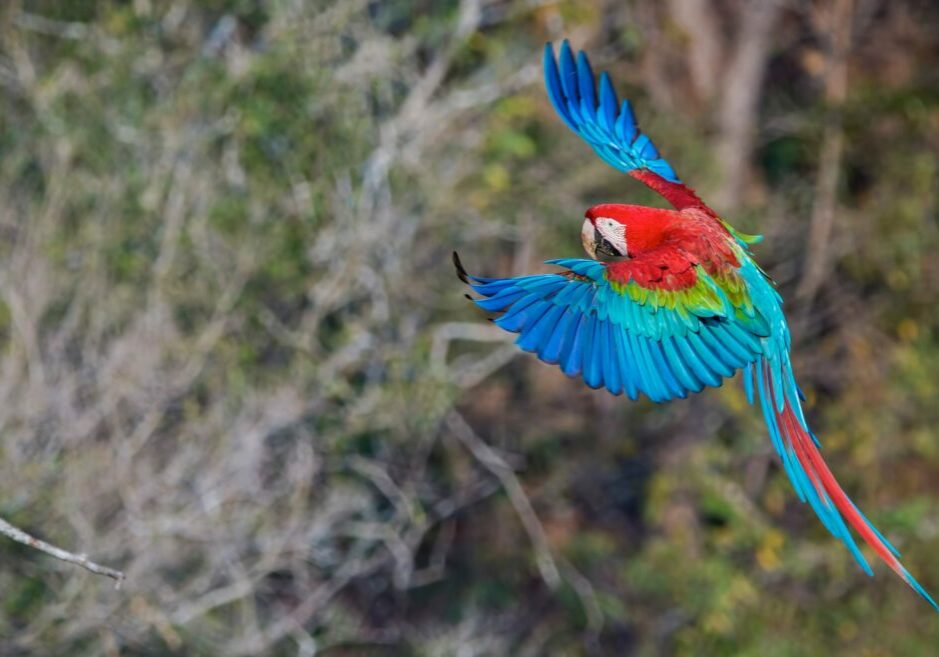
Appetite for destruction
The world’s forests are critical to the survival of our planet. Yet our food choices are driving them towards a tipping point. Find out how, together, we can keep these irreplaceable landscapes alive
